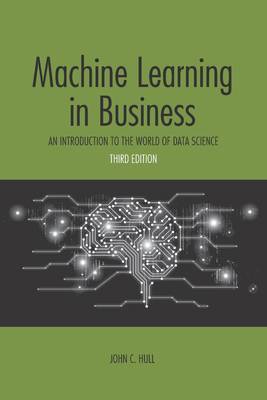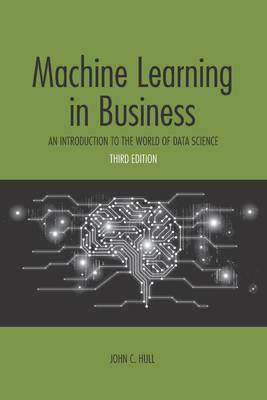
- Retrait gratuit dans votre magasin Club
- 7.000.000 titres dans notre catalogue
- Payer en toute sécurité
- Toujours un magasin près de chez vous
- Retrait gratuit dans votre magasin Club
- 7.000.000 titres dans notre catalogue
- Payer en toute sécurité
- Toujours un magasin près de chez vous
Machine Learning in Business
An Introduction to the World of Data Science
John C Hull
Livre broché | Anglais
32,45 €
+ 64 points
Description
THIRD EDITION OF MACHINE LEARNING IN BUSINESSThis book is for business executives and students who want to learn about the tools used in machine learning. In creating the third edition, John Hull has continued to improve his material. He has added new case studies and new material on the applications of neural networks. The book explains the most popular algorithms clearly and succinctly without using calculus or matrix/vector algebra. The focus is on business applications. There are many illustrative examples throughout the book. These include assessing the risk of a country for international investment, predicting the value of real estate, classifying retail loans as acceptable or unacceptable, understanding the behavior of interest rates, using neural networks to understand volatility surface movements, and using reinforcement learning for optimal trade execution. Data, worksheets, and Python code for the examples is on the author's website. A complete set of PowerPoint slides that can be used by instructors is also on the website. The opening chapter reviews different types of machine learning models. It explains the role of the training data set, the validation data set, and the test data set. It also explains the issues involved in cleaning data and covers Bayes' theorem. Chapter 2 is devoted to unsupervised learning. It explains the k-means algorithm and alternative approaches to clustering. It also covers principal components analysis. Chapter 3 explains linear and logistic regression. It covers regularization using Ridge, Lasso, and Elastic Net. Chapter 4 covers decision trees. It includes a discussion of the naive Bayes classifier, random forests, and other ensemble methods. Chapter 5, explains how the SVM approach can be used for both linear and non-linear classification as well as for the prediction of a continuous variable. Chapter 6 is devoted to neural networks. It includes a discussion of the gradient descent algorithm and stopping rules. Chapter 7 covers autoencoders, variational autoencoders, generative adversarial networks, convolutional neural networks, and recurrent neural networks. Chapter 8 explains reinforcement learning using two games as examples. It covers Q-learning and deep Q-learning, and discusses applications. Chapter 9 covers natural language processing. It discusses how the algorithms introduced in the book can be used for sentiment analysis, language translation, and information retrieval. Chapter 10 is concerned with model interpretability. It discusses the importance of making models understandable and the procedures that can be used for both white-box and black-box models. The final chapter focuses on issues for society. The topics covered include data privacy, biases, ethical considerations, legal issues, and adversarial machine learning. At the ends of chapters there are short concept questions to test the readers understanding of the material and longer exercises. Answers are at the end of the book. The book includes a glossary of terms and an index.
Spécifications
Parties prenantes
- Auteur(s) :
- Editeur:
Contenu
- Nombre de pages :
- 288
- Langue:
- Anglais
Caractéristiques
- EAN:
- 9798508489441
- Date de parution :
- 26-05-21
- Format:
- Livre broché
- Format numérique:
- Trade paperback (VS)
- Dimensions :
- 152 mm x 229 mm
- Poids :
- 385 g







